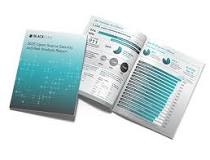Exploring Open Source Software Examples: A Showcase of Innovation
Exploring Open Source Software Examples
Open source software has revolutionised the way we interact with technology, offering a vast array of tools and applications that are freely available for anyone to use, modify, and distribute. Let’s take a closer look at some notable examples of open source software that have made a significant impact:
Linux Operating System
Linux is a powerful and versatile operating system that powers a wide range of devices, from smartphones to servers. Known for its stability and security, Linux is a prime example of collaborative open source development.
Mozilla Firefox Web Browser
Mozilla Firefox is a popular web browser that prioritises user privacy and security. Its open source nature allows users to customise their browsing experience while contributing to the improvement of the browser itself.
LibreOffice Productivity Suite
LibreOffice is a comprehensive office suite that includes applications for word processing, spreadsheets, presentations, and more. It provides an alternative to proprietary software like Microsoft Office while promoting open standards.
WordPress Content Management System
WordPress is a widely-used content management system (CMS) that powers millions of websites around the world. Its open source nature enables developers to create themes, plugins, and extensions that enhance its functionality.
VLC Media Player
VLC Media Player is a versatile multimedia player that supports a wide range of audio and video formats. Its open source codebase allows for continuous improvement and adaptation to new technologies.
In conclusion, these examples represent just a fraction of the diverse ecosystem of open source software available today. By embracing collaboration and transparency, open source projects continue to drive innovation and empower users worldwide.
Understanding Open Source Software: Examples, Definitions, and Key Differences
- What are examples of open source software?
- Is C++ an open source software?
- Is Google an open source software?
- What is open source software give five example?
- What is free source software examples?
- What is the difference between open source software and free software?
What are examples of open source software?
When exploring the realm of open source software, one frequently asked question is, “What are examples of open source software?” Open source software encompasses a wide range of applications and tools that are developed collaboratively and made freely available for users. Some prominent examples include the Linux operating system, Mozilla Firefox web browser, LibreOffice productivity suite, WordPress content management system, and VLC media player. These examples showcase the diversity and innovation that open source projects bring to the digital landscape, offering users powerful alternatives to proprietary software while fostering a culture of transparency and community-driven development.
Is C++ an open source software?
C++ itself is not a software application or tool; rather, it is a programming language. C++ is an open standard, meaning that its specifications are freely available for anyone to implement. Many open source projects and software applications are built using C++ due to its efficiency and versatility. While C++ as a language is not proprietary, the specific implementations or libraries developed using C++ can be open source or proprietary depending on the licensing terms set by their creators.
Is Google an open source software?
Google is not an open source software in its entirety. While Google does utilise and contribute to various open source projects, such as the Android operating system and the Chromium web browser, the core software that powers Google’s search engine, Gmail, and other proprietary services is not open source. Google’s approach involves a mix of open source and proprietary technologies to deliver its range of products and services.
What is open source software give five example?
Open source software refers to programs whose source code is freely available for users to view, modify, and distribute. This collaborative approach fosters innovation and community-driven development. Five notable examples of open source software include the Linux operating system, renowned for its stability and security; Mozilla Firefox web browser, prioritising user privacy; LibreOffice productivity suite, offering a comprehensive office solution; WordPress content management system, empowering website creation; and VLC Media Player, a versatile multimedia player supporting various formats. These examples showcase the diversity and impact of open source software in providing accessible and customisable solutions for users worldwide.
What is free source software examples?
Free and open-source software (FOSS) examples encompass a wide range of applications and tools that are not only available for free but also come with the freedom to study, modify, and distribute the source code. Some notable examples of free source software include the Linux operating system, LibreOffice productivity suite, GIMP image editor, and Apache web server. These software exemplify the principles of collaboration, transparency, and community-driven development that are at the core of the FOSS movement. By embracing free source software, users can benefit from innovation, security, and flexibility while contributing to a global ecosystem of shared knowledge and resources.
What is the difference between open source software and free software?
The distinction between open source software and free software lies in their underlying philosophies and licensing terms. Open source software focuses on the practical benefits of collaborative development, emphasising transparency, peer review, and community-driven innovation. On the other hand, free software prioritises users’ freedoms to use, modify, and distribute the software as they see fit, promoting ethical considerations of software freedom. While both share a commitment to accessibility and sharing of code, the nuanced difference in their ideologies often shapes the governance and distribution models of these types of software projects.






